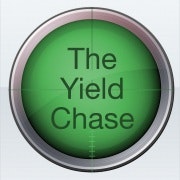Trade tension and home economics
PORTFOLIO POINT: Australia’s housing market could fall further, depending on how the Reserve Bank responds to our declining terms of trade. Decisive action could revive capital city prices.
Australia’s terms of trade ratio is falling and, while that may not mean much to the average property owner, there are major repercussions for the national housing market.
The terms of trade is defined as the ratio of value of a country’s exports to the value of its imports, and since peaking a year ago it has been declining ever since. As at June 2012, the ratio had declined by roughly 10% from its peak in September 2011.
Lower growth across many parts of the global economy in conjunction with the higher Australian dollar have been among the primary drivers of this trade slump, and the mining sector is already reeling as demand for commodities has reduced, with a number of large projects having been deferred or cancelled. Indeed, mining balance sheets are no longer being looked at with a view to potential growth, but rather with a view to probable downsizing.
So, with our terms of trade falling, what does all this mean for the broader housing market?
It means everything, given housing is influenced by employment, economic growth, the exchange rate and, particularly, by interest rates. And given that the terms of trade can impact upon each of those variables, you may well be able to see where I am coming from.
I see four scenarios being played out over the next 12 months, specifically in terms of what I think they mean for house prices.
Scenario One
A crash in Australia’s terms of trade, accompanied by a lag in cutting interest rates by the Reserve Bank of Australia.
Under this scenario, the prices for our hard commodities would continue to fall, while the Australian dollar would not come down nearly enough to offset the revenue plunge due to the effects of QE3 (Quantitative Easing 3 in the US). The RBA would continue to dither, thinking higher inflation was just around the corner. Mining projects would be cancelled on mass.
It is likely that the impact of such a scenario on capital cities would be negligible to begin with. Perth’s housing market would be hit hard, as the mounting job cuts would negatively influence employment in the city. Other cities may not experience sharp price falls due to the rate cuts of 2011 and 2012. However, if such a crash had a multiplier effect on the rest of the economy, then it is possible that other capital cities could be negatively affected as well. And so the potential is that there would be a delayed negative upon house prices across all capital cities.
Scenario Two
A crash in Australia’s terms of trade accompanied by aggressive rate cuts by the RBA, resulting in cash rates falling to lower than 2.75% by June 2013. In response, the Australian dollar falls way below US$0.90 to compensate for the commodities downturn and rate cuts.
In this scenario, the assumption is that the $A would fall well below parity with the $US. Many mining towns would still have a big house price slump as a consequence of the declining terms of trade. However, most capital city house prices would go into a strong recovery. In holiday locations such as the Sunshine Coast, Gold Coast and, NSW central coast, a recovery would also start to unfold as a result of the falling interest rates and falling dollar.
Scenario Three
The $A falls to below parity, thereby buffeting the terms of trade falls. Commodity prices stabilise at close to end of September levels. Interest rates stay on hold.
This scenario would play out in a similar fashion to scenario two. This is because, even though the terms of trade would not crash, the slowing global demand would force the resources sector to cut losses by scrapping projects and letting off workers. On the upside however, due to the falling Australian dollar, the holiday locations and Sydney would benefit the most. Most capital cities though would go into a modest housing recovery phase based on the existing rate cuts of 2011-12 and a localised economic recovery from the falling dollar.
Scenario Four
The terms of trade recovers and the $A remains above parity. The interest rates are kept on hold by the Reserve Bank.
In this scenario evidence of a recovery in Chinese house prices emerges and commodities stabilise at close to current levels, then they begin to rise again in the last months of 2012. QE3 positively impacts upon equities and commodities. In this scenario, house prices stabilise and recover for most capital cities, albeit at modest rates of growth. Interest rates stay on hold, however there is eventually some talk of a potential interest rate increase some time in 2013.
At the moment it is difficult to see which scenario is going to play out. Over the past three weeks all four have shown their presence.
Scenario one would be fairly disastrous all round, while any of the others would be a fairly good outcome for the housing market and the economy. Moreover, it is going to take decisive action and insight by the Reserve Bank at a time where one bad decision could cause real problems all round.
Louis Christopher is managing director of independent property advisory and forecasting research house SQM Research.















